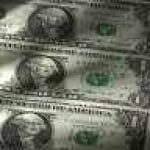 A rousing display of diversions this week assured the American populace was looking every which way but right under its collective nose. Midterm elections. White House spats with purveyors of fake news. The forced resignation of Attorney General Sessions…
A rousing display of diversions this week assured the American populace was looking every which way but right under its collective nose. Midterm elections. White House spats with purveyors of fake news. The forced resignation of Attorney General Sessions…
Sideshows like these, and many more, offered near limitless opportunities to focus on matters of insignificance. Why stop to really understand what’s behind a headline when hundreds of new headlines pop up by the minute? Why bother to try and figure things out when real thinking is such an inconvenience?
What’s more, the S&P 500 jumped nearly 3 percent between market open Monday and market close Thursday. Clearly, the October mini-panic is now a distant memory. At this rate, we’ll all be rich off stocks by the New Year.
Yet while the mob stampeded from one distraction to the next, we remained focused on the real story: The outright pilfering of the nation’s time, talent, and treasure. This isn’t the story that’s readily presented by the headlines. But it is readily evident for those willing to open their eyes and look around at the world before them.
You see, the real story, the story that’s being largely ignored, is three fold. Rising borrowing costs, a debt crisis, and price inflation are converging with unbearable consequences. You can’t miss it.
Fake Money
The U.S. Treasury, if you didn’t know, will issue $1.3 trillion in new debt in 2018. This represents a 146 percent increase in new federal government debt issuance from 2017. By our rough estimation, this number will significantly increase in 2019 and again in 2020.
But who will buy this glut of Treasuries? Not the Fed. Remember, the Fed is currently reducing its balance sheet. Not China. Remember, China, facing a trade war, surely isn’t eager to buy U.S. debt.
Without the demand of these big debt buyers yields will rise at the worst possible time; when public and private debt are at record levels. As interest rates rise, credit becomes more and more expensive. So, too, servicing existing debt takes up a greater and greater percentage of the borrowers budget.
Rising borrowing costs will also have the effect of strangling inflated asset prices, including stocks and real estate. Yet as asset prices deflate consumer prices, thanks to trade tariff policies, will inflate. This scenario, in short, will be the exact opposite of the wealth effect. But there’s more…
The unfavorable conditions facing the U.S. economy are the product of fake money. Over the past decade, an abundance of fake money has fashioned a world that’s greatly at odds with itself. Take away the fake money and the whole giant edifice collapses.
When Fake Money Becomes Scarce
To clarify, honest money, the kind that cannot be created by making digital notations on a central bank’s balance sheet, is a scarce resource. It represents accumulated capital, including the time and sacrifices made to earn it. When spent, it is spent wisely.
Fake money, on the other hand, is squandered in the most incredible ways. Namely, fake money is squandered on fake businesses. By this, we mean businesses that provide products and services that wouldn’t otherwise exist without a seemingly endless supply of fake money.
Fake businesses, like Silicon Valley’s bizarre Ponzi balloon companies, are dependent on fake money for their existence. Similarly, the abundance of state sponsored credit has transformed University campuses into money sucking country clubs. Absent of fake money, the customer base for colleges would dramatically shrink – along with the glut of fake majors and fake degrees.
The automobile industry is another example of a business that’s dependent on fake money. Without fake money, only a small fraction of the current sales would materialize.
Of course, the granddaddy of all fake money dependent businesses are the deep state lard bucket companies that swig and slurp directly from Washington’s fake money trough. These companies would quickly vanish if not for the plentiful supply of fake money.
Throughout all corners of the economy these fake money dependent businesses persist. Yet at this point in the business cycle many of them are running on fumes. Employees show up to work each day to move them forward. Management borrows money to cover the gaps between accounts payable and accounts receivable. But it’s a losing battle.
Credit markets, because of Fed policies of extreme liquidity, have been distorted well beyond what’s conceivably possible over the last decade. The attraction of fake money was too much to pass up. Why save and invest when you can borrow and spend?
Yet, now, as credit tightens and fake money becomes scarce, clarity will be delivered with impassive rigor. Busts, bankruptcies, and bailouts will be the order of the day.
Sincerely,
MN Gordon
for Economic Prism
Return from When Fake Money Becomes Scarce to Economic Prism





Pingback: Black Coffee: Red Ink and Blue Wire – Len Penzo dot Com